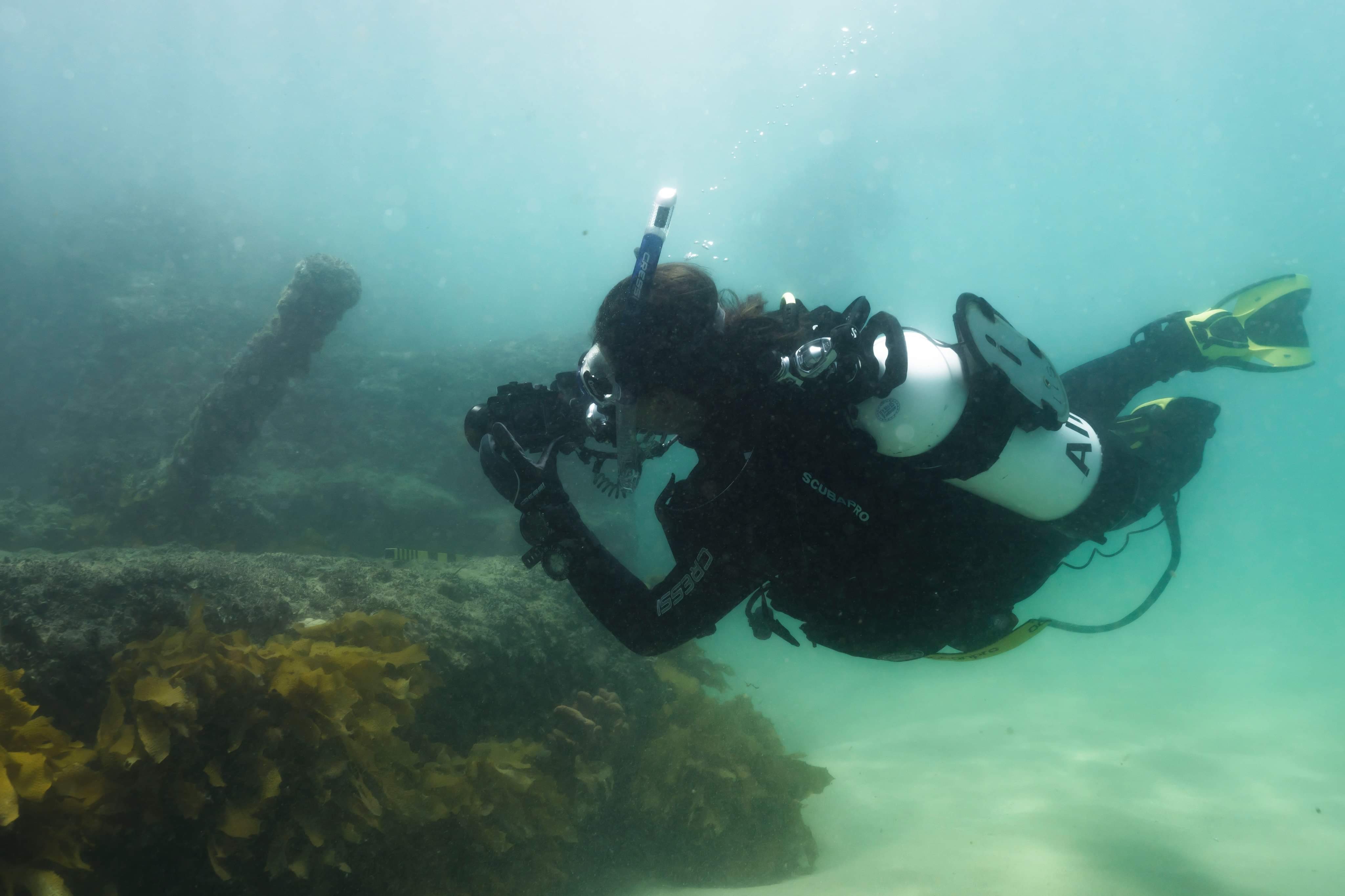
Hello, I’m Philippe Kermeen, a Masters of Maritime Archaeology student at Flinders University who entered into the Micro-credential Professional Scientific Diver Certification (MICR-PSDC) in April 2021 after coming from Victoria to finish off my degree.
This micro-credential serves the scientific diving community by providing a necessary foundational platform for scientific maritime archaeology and marine science students to acquire technical in-water training that meets the competencies for scientific diving prescribed by the Australian Standard 2815.6, which is an occupational or professional diver training standard as opposed to a certification issued by a recreational diver training agency.
Thus, at Flinders University, under the direction of Associate Professor Jonathan Benjamin (the academic lead) and Hiro Yoshida (the technical SCUBA instructor), students can obtain an accredited qualification with which they become a Scientific Diver. This also enables you to operate in Australia under the scientific diving operational standard AS/NZS 2299.2 and as a Restricted Occupational Scuba Diver under AS/NZS 2299.1, the non-sector specific standard for general workplace diving.
Moreover, the MICR-PSDC students also earn a certification from the American Academy of Underwater Sciences (AAUS), an internationally recognised certification which allows you to participate as a scientific diver for AAUS Organisation Members. This is great for international students and Australians looking to participate in projects overseas.
How the micro-credential developed my skills
My background in diving is mostly in the cold Port Phillip Bay waters, where having less than 2 metres of visibility is quite common and divers are accustomed to bad visibility. Most of the people I dived with and who trained me were part of the Cave Divers Association of Australia (CDAA) who are very professional in what they do and don’t leave anything up to chance. With them, I travelled the world and dived in many amazing places including the Philippines, Fiji, Egypt, Galapagos and Bali.
Coming into the program, I’m not afraid to admit, that I probably thought that I had more experience than I really did. I thought that having completed close to 100 hours of diving and having been trained by one of the leading SCUBA instructors in the Southern Hemisphere, Jane Bowman (Ocean Divers, Victoria), was enough but then I met Hiro Yoshida and quickly realised how much I still had to learn. Hiro is like a merman under water – someone that tunes the water to his will and then glides around, seemingly using no air.
Over the first few dives in the micro-credential, we covered things I was already familiar with in order to verify my prior learning. I was a qualified Rescue Diver with a couple of specialities in Wreck and Deep diving coupled with Nitrox, a gas mixture containing less nitrogen, allowing for a longer no-decompression limit and shorter surface intervals for repetitive dives. Hiro ran through refresher skill checks to gauge whether those skills were still in my brain to perform, and to see what I may have missed in my training, as things that we could work on.
I acquired a multitude of skills. I’d never tried full-face mask diving before, in fact, I didn’t even know why I would ever need it – but the micro-credential also teaches how to think differently about diving, a departure from thinking like a sport diver. Scientific diving isn’t luxurious, it’s a handy tool to be able to plan and dive safely and control yourself on the job, so getting proficient in your skill sets is really important. The course runs through a large list of skills and knowledge we all need to be able to participate in a project as a professional scientific diver.
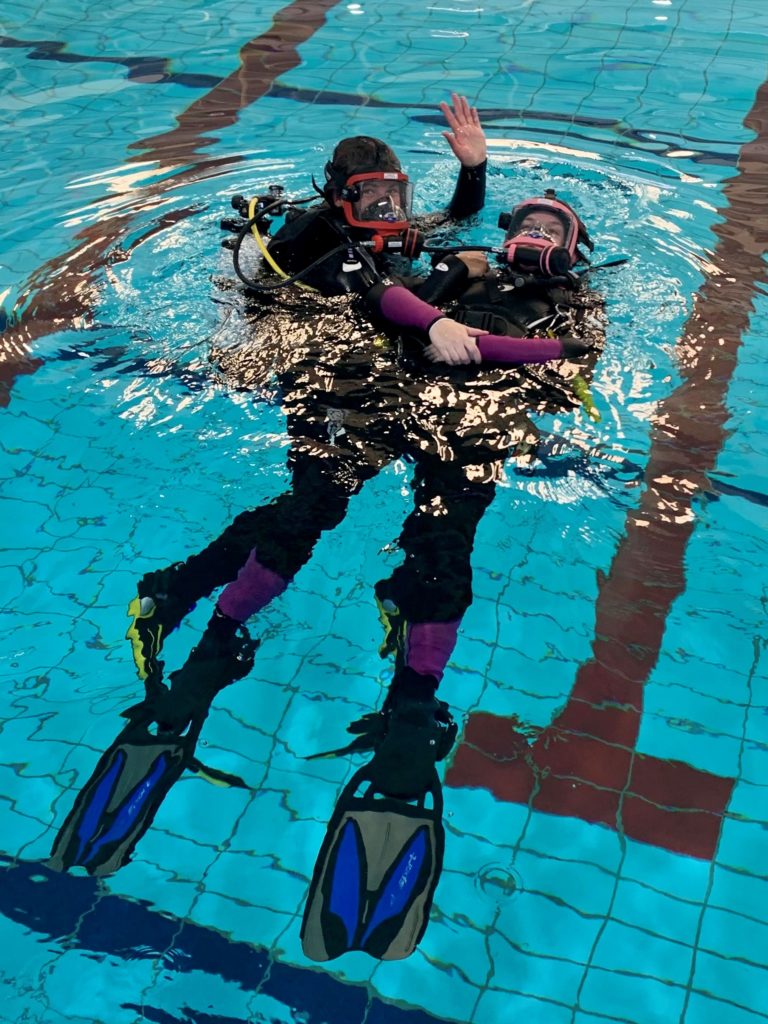
Highlights covered in the micro-credential include
- Full-face mask diving (confined water and open water practice)
- Shot-line installation and retrieval
- Use of various hand tools
- Scale-based drawings
- Photography and photogrammetry
- Dive Planning and completing risk assessments
- Task loading
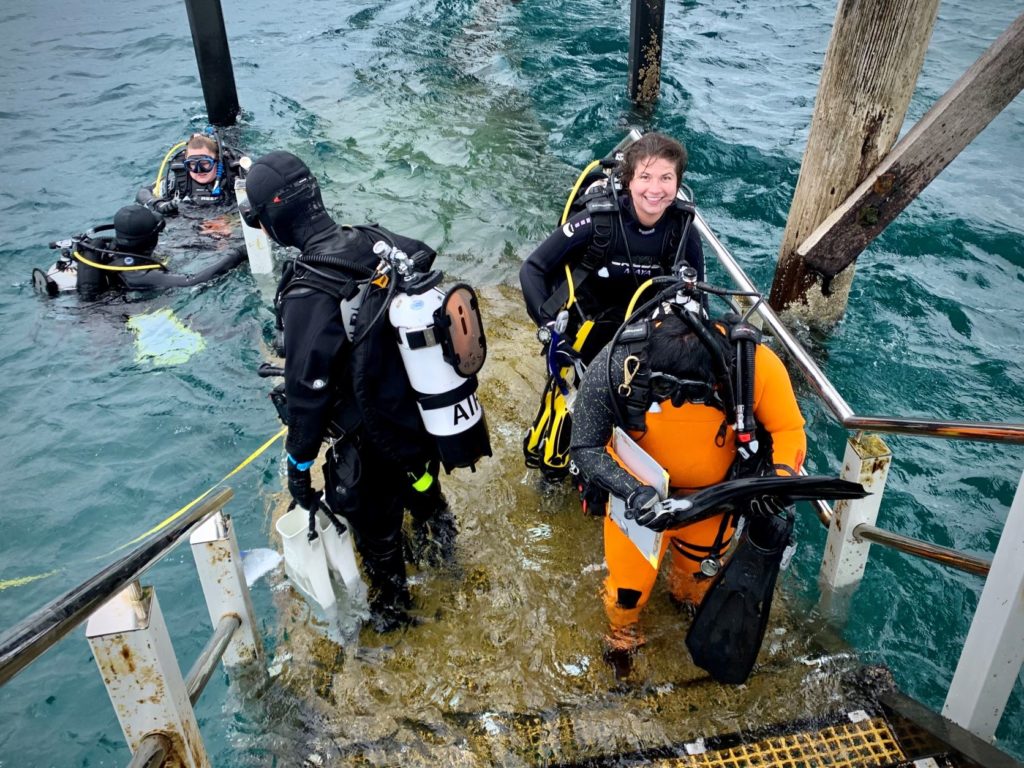
Learning skills and putting them into action
We were taught these skills through in-water training during field schools but mostly through an in-water program set up by the program, casually referred to as “Friday Dive Day” (FDD). This is the allocated time for all student divers, not just those undertaking the micro-credential, to come down, boost diving hours and work on skills in the presence of more skilled divers.
Usually, we meet at the boat shed, pack gear, drive to Port Noarlunga Jetty and undertake skills that require us to fill in the workbook or skills we are having trouble mastering. Dr Benjamin, Dr Wendy van Duivenvoorde and Dr John McCarthy advise any students who need to practise their diving to talk to Hiro Yoshida about diving, joining FDD or to ask one of the students who is undertaking the micro-credential to help them out if they have the time and are comfortable doing so. Often the staff would set up certain dives or practises that the students asked for which the student body thought gives them the most enriching experience.
Our group would call upon each other to try and perform certain dive skills we had learned in the weeks before, to either refresh our skills or to keep working on them if we didn’t feel comfortable performing a certain task. This included anything from renting out stage tanks and practising with them on normal dives, lift bag work with heavyweights and rope work, photography, videography, and photogrammetry skills. We also encouraged each other to keep going in the program during autumn/winter periods, as it does get cold, and we are a bit fragile at times.
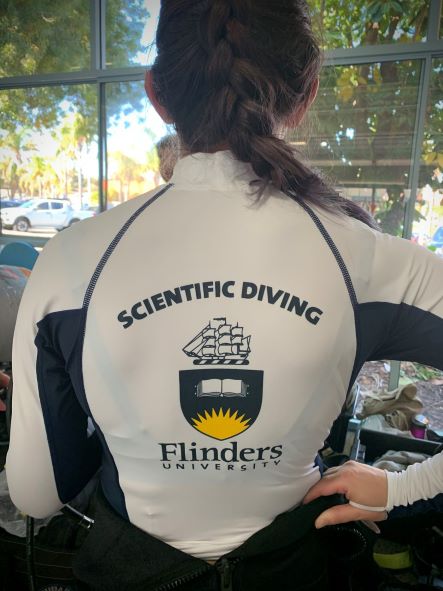
My micro-credential highlight
The Maritime Archaeology field school held on Moreton Island was my absolute highlight. We had been part of the program since early April and had been working really hard. We went to Moreton Island in early to mid-June and met industry leaders who had thousands of hours of diving in the commercial sector under their belts and had a wealth of information to share.
David Steinberg (Senior Heritage Maritime Archaeologist for the Northern Territory) commented on the skills of the “Red Team” – a team made up entirely of MICR-PSDC divers. He was impressed that during the entire time that he had to supervise, not at any moment did he need to step in to help with buoyancy, task loading, gear fixing, entanglements, etc. This came as a huge compliment as Hiro Yoshida often picked out flaws in our diving which we were continuously working on to improve. For someone at his level of experience to mention that, it really showed how much we had improved in the very short amount of time we had been in the micro-credential.
During the field school, our Maritime Archaeology boat Research Vessel (RV) Bungaree also completed its maiden trip. We mainly used it for student transport to and from site, and as a safety measure to reach personnel that may be too far from shore to be attended by rescue.
Since then, RV Bungaree has been used for a multitude of reasons. For the MICR-PSDC, we used the vessel to reach the Stanvac Barges Graveyard (west of O’Sullivan Beach’s boat ramp) to complete our deep dive skill (30 metres). We also travelled to other dive sites to perform other skills set out in the MICR-PSDC workbook for more deep dives, navigational work, buoyancy practice, and photogrammetry.
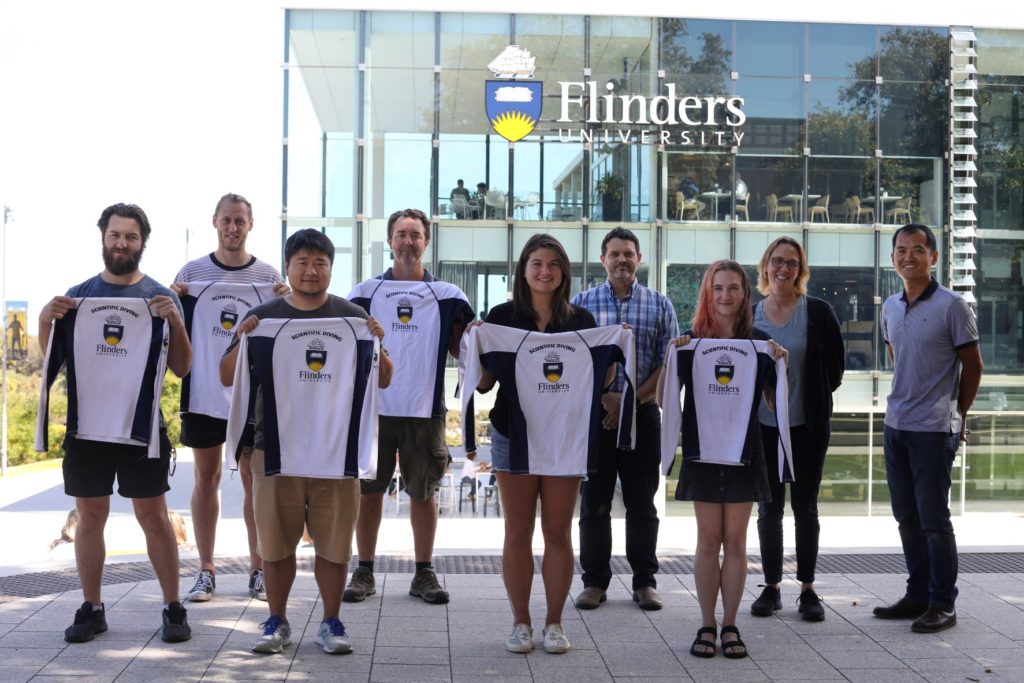
Future-ready
Completing the micro-credential has given me a huge advantage over other people in my industry who would have to undertake separate vocational training after graduating. Having this skill level already in our arsenal allows us to undertake scientific diving with more confidence and a foundation to go on to pursue additional qualifications needed for other industries including commercial diving.
In a way, we, as the first generation, are leading the way with industry partners and showcasing our potential and professionalism which we have learnt throughout this micro-credential. I hope that the newer graduate students can find a place in the scientific diving world with the skills that they can learn and practise at Flinders University. I have already been employed on two projects where I have used my qualification as an accredited professional scientific diver.
Author: Philippe Kermeen

